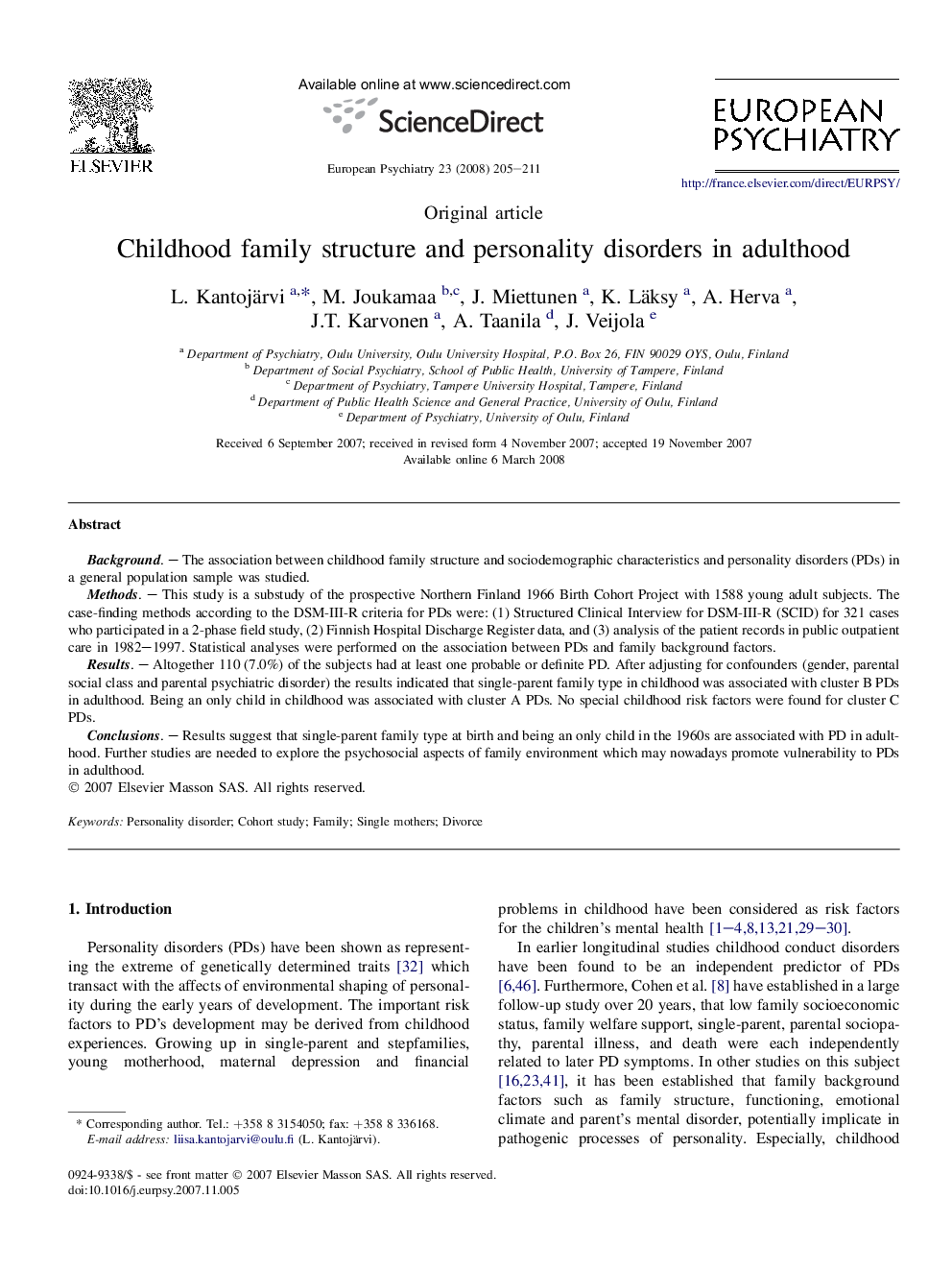| Article ID | Journal | Published Year | Pages | File Type |
|---|---|---|---|---|
| 4185200 | European Psychiatry | 2008 | 7 Pages |
BackgroundThe association between childhood family structure and sociodemographic characteristics and personality disorders (PDs) in a general population sample was studied.MethodsThis study is a substudy of the prospective Northern Finland 1966 Birth Cohort Project with 1588 young adult subjects. The case-finding methods according to the DSM-III-R criteria for PDs were: (1) Structured Clinical Interview for DSM-III-R (SCID) for 321 cases who participated in a 2-phase field study, (2) Finnish Hospital Discharge Register data, and (3) analysis of the patient records in public outpatient care in 1982–1997. Statistical analyses were performed on the association between PDs and family background factors.ResultsAltogether 110 (7.0%) of the subjects had at least one probable or definite PD. After adjusting for confounders (gender, parental social class and parental psychiatric disorder) the results indicated that single-parent family type in childhood was associated with cluster B PDs in adulthood. Being an only child in childhood was associated with cluster A PDs. No special childhood risk factors were found for cluster C PDs.ConclusionsResults suggest that single-parent family type at birth and being an only child in the 1960s are associated with PD in adulthood. Further studies are needed to explore the psychosocial aspects of family environment which may nowadays promote vulnerability to PDs in adulthood.
